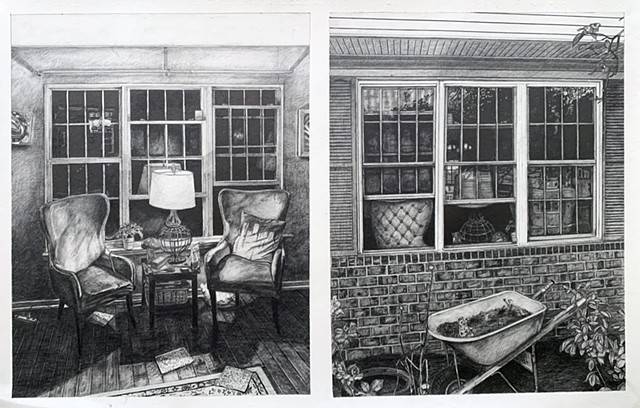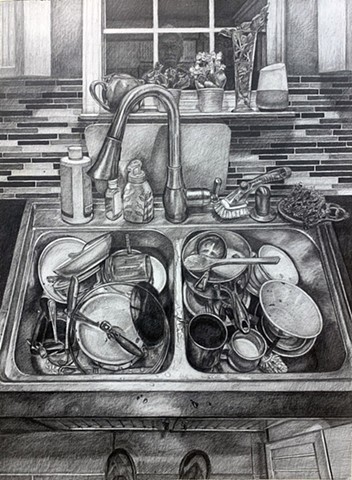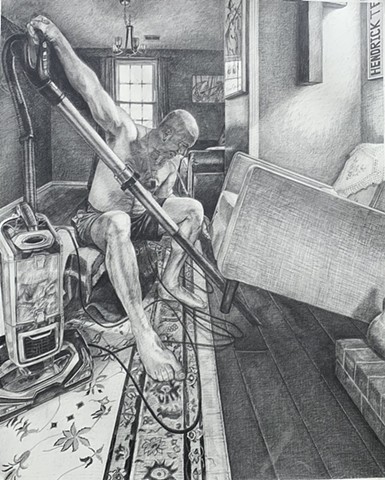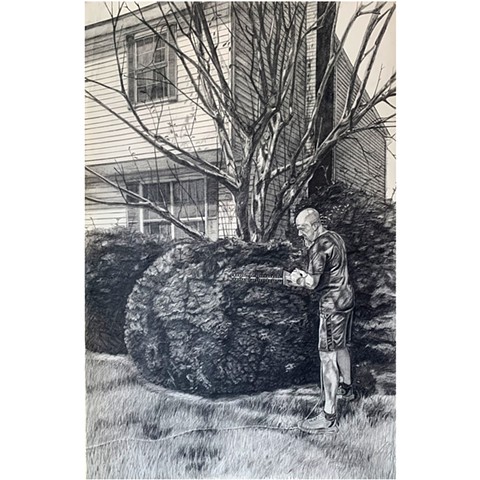The Move to Suburbia: Hercules' New Labors and Other Domestic Affairs
The smell of spring mulch heavily applied to regulate flower beds in their carefully curated rectangles and semi-circles, summer sounds of mowers and edge-trimmers that ensure manicured lawns, and the splashing and screeching emerging from backyard pools, define most of the American suburban living. In her book, Lure of the Local: Sense of Place in a Multi-centered Society, Lucy Lippard speaks of places as hybrids of knowledges and experiences that are both visible and invisible to the exterior: “By entering that hybrid, we change it; and in each situation, we may play a different role.” How does one recognize the impact they have upon entering an existing space while also acknowledging one’s self-transformation through the process? Through a series of paintings and drawings that investigate my domestic space, and a comedic interpretation of the labors required for its upkeep, I reimagine the disciplined tasks of the suburban homeowner as a cultural staple of the American middle-class. I foreground my suburban middle-aged experience as I portray myself as an aging Hercules engaged in Quixotic chores. While my drawings are meant to ridicule the implied heroism of the mundane, yet sustained activities, they also interrogate my own role in maintaining suburbia’s protocols.






















